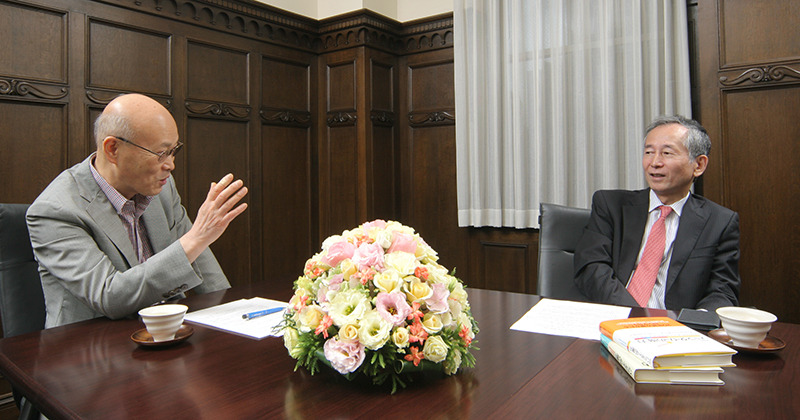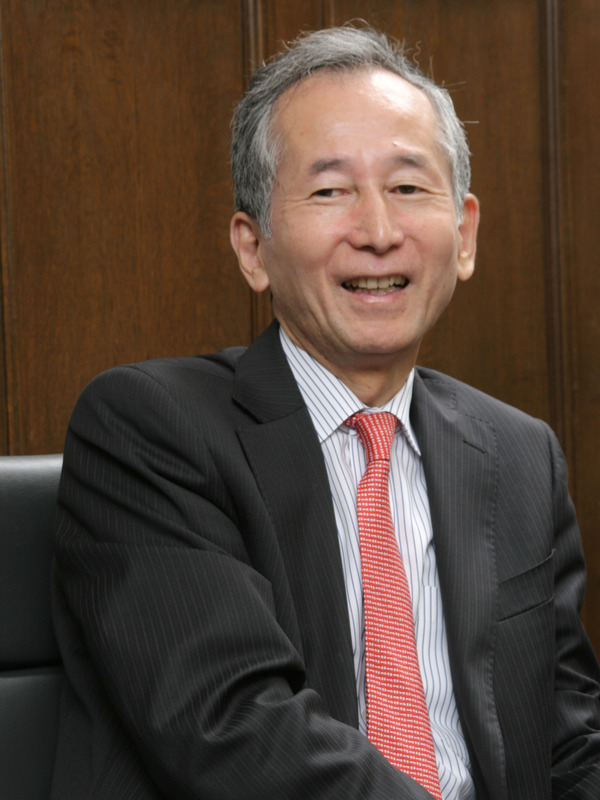
(Affiliations as of the time of publication in "Ad Studies")
Continuing from the previous session, we welcomed Professor Kazunari Uchida of Waseda University Business School, who has long advocated the importance of paradigms in corporate strategy and has also been active as a consultant. Together with Professor Yasushi Tomisawa of Meiji University's Graduate School of Global Business, they introduced various real-world examples, exchanged views on the paradigm shifts occurring, and looked ahead to future directions.
Diversification of Consumer Needs
Tomoshi: When I think of paradigm shifts, what comes to mind is the concept of co-creation with consumers, a notion discussed in marketing for quite some time.
While incorporating consumer feedback and needs assessment into the product development process is standard practice, we may need to rethink this paradigm. For instance, group interviews to gauge consumer needs often prove ineffective. Why? Because the information gathered from early adopters or lead users doesn't necessarily capture actual needs accurately.
While early adopters and lead users have high product literacy and their opinions and ideas are valuable, there's a concern that this very fact might mislead us about where the true product needs lie.
Uchida: I completely agree. I believe we can't fully capture the innovators and early adopters described in sociologist Everett Rogers' diffusion theory. Moreover, we're no longer in an era where consumers necessarily follow their behavior patterns when purchasing goods or consuming services.
Take the example of Trippiece, a Japanese travel company. They solicit ideas online about what kind of trip people want to take. When participants get excited and gather, the company doesn't arrange the trip itself; instead, it relies on a major travel agency they partner with. The fun lies in the process of creating the trip together with everyone, so even if a major travel agency tried to do this, they couldn't compete. What I'm saying is that because consumers themselves are changing in various ways, the approach of identifying representative examples, samples, or early adopters to lead the way is reaching its limits.
Tomisa: Consumers are becoming harder to pin down, and they don't necessarily seek out the absolute cutting edge. For example, netbooks released by Taiwanese companies like Acer and ASUS once captured about 30% of the overall PC market share for a year or two. Yet, they didn't use the latest CPUs. They targeted users who only needed internet and email by using older CPUs and motherboards to cut costs.
Ultimately, this case shows that even without the latest features, simply identifying what functions consumers actually want, providing the bare minimum functionality, and pricing it accordingly was sufficient to meet demand. I believe it's crucial to have a development system that can capture this kind of thinking.
Conducting group interviews at fixed points a few times a year may not be sufficient for discovering needs. To put it extremely, I feel that needs cannot be grasped without following consumer opinions daily and observing the patterns of change. In other words, it's about having a concept development mechanism that doesn't just pick up needs at a specific point in time and turn them into a product concept. Instead, it involves continuously gathering fragments of need information, building multiple hypotheses based on them, and then refining and revising those hypotheses.
The Protagonist of Paradigm Shifts
Uchida: Years ago, I co-authored a book with colleagues on "Consumer Stimulation Strategy." It proposed not capturing needs to develop products, but instead launching several products we wanted to introduce. Some unexpectedly sold well, while others we thought would be hits flopped. Then, we'd launch several variations of the unexpected hits, gradually pinpointing the sweet spot.
This approach, unlike convenience store private brands, might be difficult for manufacturers. However, if a company can internalize this method, it becomes a tremendous capability. Companies that build this in should become highly dynamic.
Furthermore, this approach could extend beyond individual companies to the entire industry. To put it extremely, if there are ten automakers, it might be acceptable for three to be huge hits, three to be moderately successful, and four to fail. In other words, if the industry as a whole could establish a system where various trials are conducted, and success and failure lead to natural selection, wouldn't this invigorate the industry and the nation as a whole more than obsessing over the performance of individual companies?
Tomisa: That's quite a radical idea (laughs).
Uchida: However, for that to be possible, we need greater talent mobility and more corporate M&A activity. Under Japan's current system, it's quite difficult for other companies to hire employees from bankrupt firms. While Silicon Valley has its successful stories, far more people fail. But considering that the immense vitality there stems from giving those people second and third chances, wouldn't it be worthwhile for the entire nation and industry to adopt such a system?
Tomisa: Failure is the result of taking on a challenge. So the question is why aren't companies emerging that truly value the potential ability to take on such challenges?
Uchida: That ties deeply into the question of why and where paradigm shifts occur. It's often said that innovation arises from the periphery, rarely from the core. However, those on the periphery are often branded as oddballs or failures within their companies. So, no matter how loudly they shout the truth, their ideas rarely get adopted. Unless we actively seek out and protect or support these peripheral innovators and misfits to drive innovation, paradigms won't shift easily.
While innovation does occur, I believe it often stems from somewhat accidental factors. Unless we make a conscious effort to cultivate it, I suspect few executives will emerge capable of driving paradigm shifts.
Impact on Media and Advertising
Tomisa: By the way, we're now seeing a situation where advertisers own media, and conversely, media entities are becoming advertisers themselves. For example, online media operators find it difficult to attract audiences solely through the internet, so they're appearing as advertisers in traditional mass media. I believe the roles of players will undergo significant restructuring, with media also becoming advertisers.
Traditionally, media transformation was the role of media companies. They adjusted their media to attract advertisers more easily or devised new advertising media mechanisms. Going forward, as advertisers themselves begin to operate and manage media, they will understand how they want to use media. This opens the possibility of incorporating such companies into their own media and collaborating with them.
In other words, as the major players in media change, advertising activities themselves will transform. To elaborate on the earlier point, as companies taking leadership roles also gain leadership in the advertising market, the question of what role agencies will play becomes a very significant challenge.
Uchida: While observing how media and advertising evolve is important, personally, I believe the will to shape the future is crucial. What I mean is, until now, it was sufficient to predict the future to some extent as an extension of the past and identify key drivers. But honestly, when you don't know what will happen, rather than just predicting, it's better to act on your own ideas and courageously take on challenges.
For example, I don't believe Google arrived at its business model by predicting the future of advertising. AdSense and AdWords emerged as advertising models for entirely different reasons. The same applies to the business model of Kakaku.com. They fought against existing players through trial and error, acting as paradigm shifters who were conscious of wanting to change the world in this way or wanting to try this approach.
Expanding Business Opportunities
Tomisa: I feel it also tests whether you can sensitively perceive how the environment reacts to what you're trying to do. Of course, managers or players likely set goals based on certain theories and prior considerations. But isn't dynamic agility—the ability to keenly detect the actual shifts in customer behavior—more crucial now?
Uchida: It might be true that such agility can emerge organically or as part of a major trend, but that ultimately means you're either following behind or just riding the wave. Isn't the greater value in creating the wave or trying to stem it? Of course, there will be failures, but I believe we must take on challenges of that magnitude. The words of American scientist Alan Kay, known for pioneering the concept of the personal computer, resonate deeply with me: "The best way to predict the future is to invent it."
Tomisa: Opportunities to create the future yourself are definitely expanding. Especially in manufacturing and retail, as seen with fabless companies, we have a social infrastructure where you can outsource manufacturing to highly capable partners. So, as long as your product concept and design are excellent, you can bring it to market even without in-house manufacturing capacity. Furthermore, if you can draw clear, visible design blueprints, you can produce tangible forms using 3D printers.
In this environment, the mindset for capturing intent, concept, or needs and turning them into products becomes increasingly crucial. Since convenient solutions exist beyond that point—where outsourcing can produce a decent product—the business paradigm is bound to transform dramatically.
For example, there's Bsize, a home appliance manufacturer started by just one person. This individual couldn't create the products they wanted at their former company, so they went independent and outsourced production. They created a best-selling LED desk lamp. More companies like this will likely emerge. Players will become more specialized, and it might become possible to make things without possessing the capabilities previously deemed necessary.
Uchida: Indeed, opportunities are expanding. I hope new paradigms will emerge continuously, revitalizing society. Essentially, what's needed is new thinking and action that breaks free from conventional wisdom and facilitates paradigm shifts.
Tomisa: Thank you very much for today.
[End]
*The full text is available on the Hideo Yoshida Memorial Foundation website.











